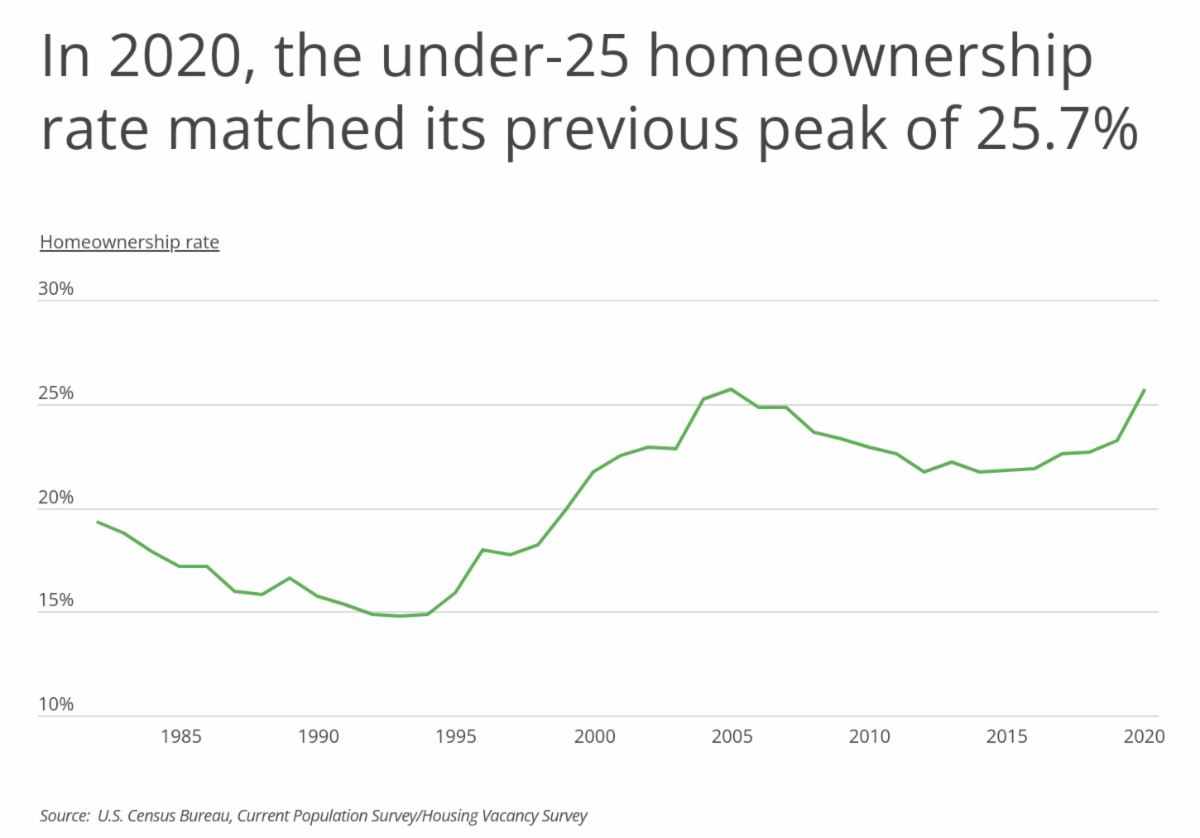
INDIANA – The red-hot residential real estate market of the last two years has shown some recent signs of cooling off, but finding a home remains challenging for many buyers. Intense competition and rising prices have made it especially difficult for young, first-time homebuyers to make a purchase.
Some unique, pandemic-related economic factors have contributed to the current state of the market, but some of the largest structural factors driving the current market are generational. Baby boomers—those born between 1946 and 1964, who total more than 70 million Americans—are increasingly choosing to age in place as they reach retirement. Simultaneously, the millennial generation, who were born between 1981 and 1996, are now America’s largest generational cohort and at a peak age for buying a first or second home. Together, these forces mean that more buyers are competing for fewer homes. Freddie Mac estimated last year that the U.S. needs 3.8 million more homes to meet current demand.
Despite these challenging conditions, young buyers have nonetheless made progress in homeownership in recent years. The homeownership rate for adults under 25 reached 25.7% in 2020, matching a previous peak from the height of the housing bubble in 2005. While the Great Recession reduced the share of adults under 25 who owned, that figure remained higher throughout the 2010s than it had been in the 1980s and 1990s.
 |
Data on home loans from the Home Mortgage Disclosure Act also confirms young adults’ increasing levels of homeownership. Of all age groups, adults under 25 saw the largest percentage increase in the number of home loans originated between 2019 and 2020, increasing by 16.9%. However, the same data also points to the competition that young buyers may face: the number of home purchase loans originated increased in every cohort from 2019 to 2020, and adults under 25 were the second-smallest age cohort, representing only about 160,000 loans out of 3.4 million total.
 |
For young adults interested in homeownership, some geographic locations prove more favorable than others. Many of the states with the highest shares of home purchase loans from adults under age 25 are found in the Midwest, led by Iowa at 10.5%. The Midwest tends to have lower home prices, which makes home purchases more attainable. Many leading metros for young homeownership are also found in the affordable Midwest and South. In contrast, high-cost states including Hawaii (1.3%), California (2.1%), and New Jersey (2.2%) have much lower shares of home purchase loans from young adults. With lower earnings and less savings and equity accumulated than their older counterparts, young adults are more likely to struggle to afford homes in these markets.
 |
The data used in this analysis is from the Federal Financial Institutions Examination Council’s Home Mortgage Disclosure Act. Only conventional home purchase loans originated in 2020 were considered. To determine the locations with the most homebuyers under 25, researchers at Inspection Support Network calculated the share of home purchase loans taken out by applicants under 25 years old. In the event of a tie, the location with the greater total number of home purchase loans accounted for by applicants under 25 years old was ranked higher.
The analysis found that 8.6% of all conventional home purchase loans in Indiana were for homebuyers under the age of 25. Out of all U.S. states, Indiana had the 2nd largest percentage of under-25 homebuyers in 2020. Here is a summary of the data for Indiana:
- Under-25 share of home purchase loans: 8.6%
- Total under-25 home purchase loans: 6,658
- Median loan amount: $135,000
- Median loan-to-value ratio: 95.0%
- Median interest rate: 3.38%
For reference, here are the statistics for the entire United States:
- Under-25 share of home purchase loans: 4.6%
- Total under-25 home purchase loans: 161,520
- Median loan amount: $165,000
- Median loan-to-value ratio: 95.0%
- Median interest rate: 3.25%
For more information, a detailed methodology, and complete results, you can find the original report on Inspection Support Network’s website: https://www.inspectionsupport.com/resources/cities-with-the-most-homebuyers-under-25/.



